While I was at Korakuen Station, I noticed the word “setsuden” crawling past on an electronic announcement display. This might strike some people as ironic, but if the displays have to be kept on to inform passengers of information such as suicide delays, they may as well also include some positive messages about saving energy.
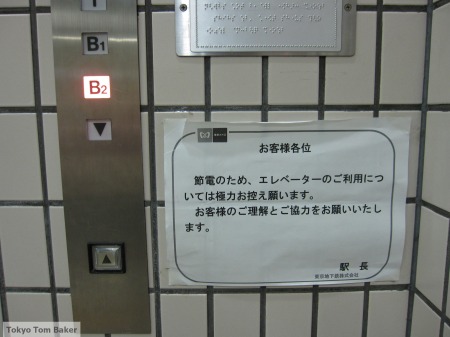
The elevators were also still on at the station — as
they must be for the sake of the disabled, the elderly and people with baby carriages — but this sign asks, “stesuden no tame” (for the sake of setsuden), that people refrain from using them as much as possible.
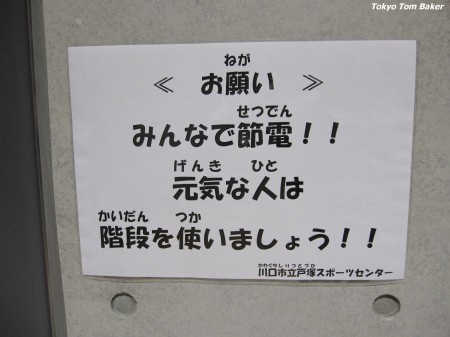
This sign next to an elevator at a public gym and pool in Kawaguchi has a hortatory tone: “Please! Everybody setsuden! Genki people use the stairs!”

Meanwhile, at a similar facility in Ikebukuro, Tokyo, which has its entrance on the ninth floor, a setsuden sign announces that the middle elevator in a bank of three has been shut down to save energy. The air conditioning in the elevators apparently had also been shut off at the time of my last visit there, and air inside the glass elevator cars was baking.
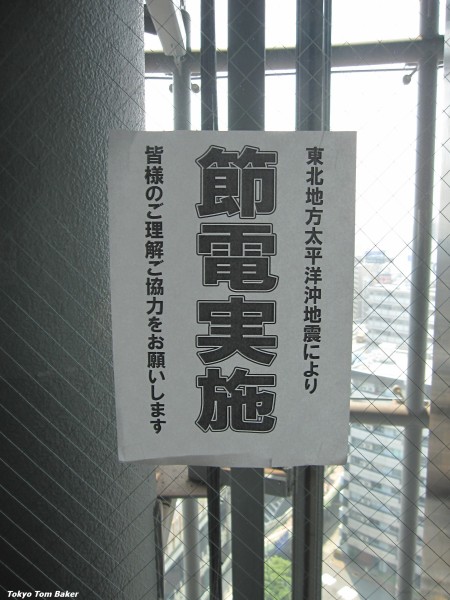
A setsuden sign upstairs in the same building asks for everyone’s cooperation.

A sign in the window of a Domino’s pizza shop in Kawaguchi announces that their setsuden measures include turning off their neon sign.

Daitune, an udon and tempura shop in Ginza where I had lunch yesterday, has a hand-written setsuden sign in its window. There was no air conditioning inside, but the doors were kept wide open.
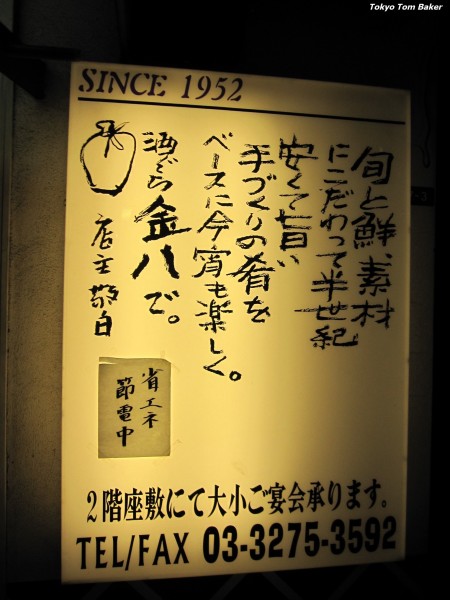
A bar in the Yaesu district adjacent to Tokyo Station had a similar sign, and a similar practice.
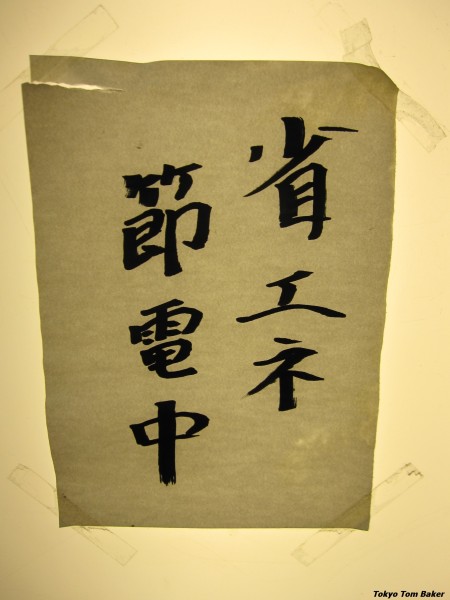
Here’s a close-up of the Yaesu bar sign. Next to the word “setsuden-chuu,” you can see three characters that are read “shou-ene.” This is short for “shou-enerugii,” which means saving energy. This seems redundant to me, but it is another common feature of many setsuden signs.

Here’s a setsuden sign at a bar in Ginza.
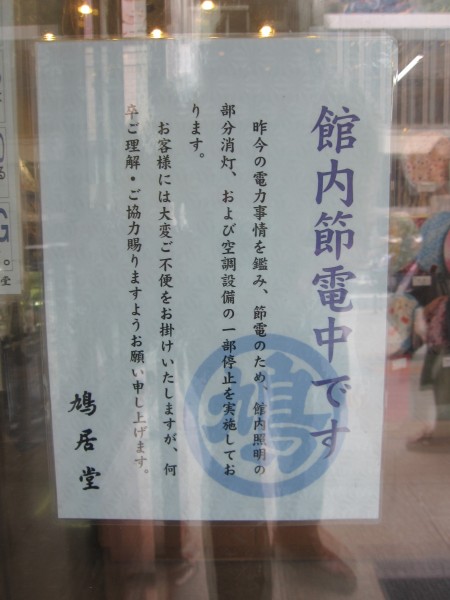
This setsuden sign is in the front window of a Ginza shop called Kyukyodo, a purveyor of traditional Japanese luxury goods that is currently emphasizing its selection of elegant fans and cooling furin wind chimes. They should do a booming business this summer.
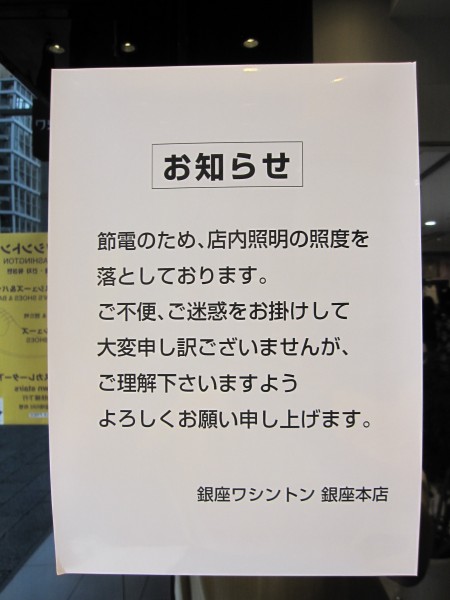
This setsuden sign at the Washington Building, home of Uniqlo’s main Ginza store, says that the lights have been dimmed.

This setsuden sign on an ATM in Korakuen Station says its operating hours have been reduced to 9 a.m. to 6 p.m. to save electricity.
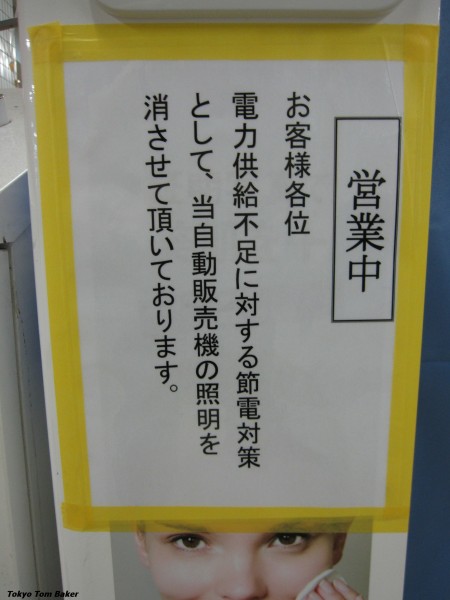
A sign at an ID photo booth in the same station says
its lights — presumably not including the flash — have been dimmed for setsuden. Interestingly, the sign describes the machine as a “jidoubaiki,” or vending machine. Before stopping to take this photo, I hadn’t realized that photo booths count as vending machines in Japanese.

Here’s a setsuden sign on a more conventional vending machine, run by Pepsi Japan.

Here’s a setsuden announcement at another dimly lit vending machine. In addition to reducing or turning off their lights, many vending machine operators have also reduced the daily hours during which their refrigeration units are running.
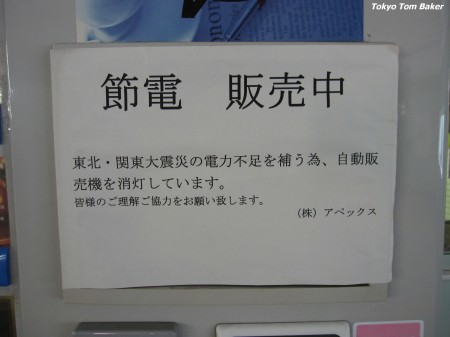
On this drink machine’s sign, the word “setsuden” appears next to a three character word pronounced “hanbai-chuu,” which means “now selling” — or in this case, “now still selling.”
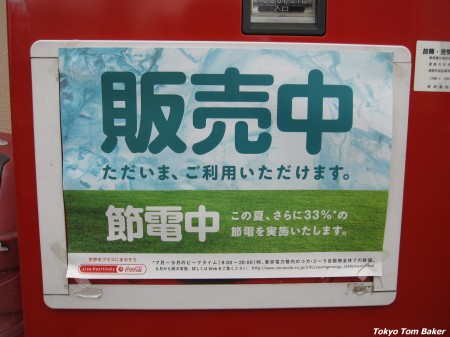
On this drink machine’s sign, “hanbai-chuu” gets pride of place, and “setsuden-chuu” gets second billing.

Here they get more equal emphasis.

And here’s one more drink vending machine pleading
its case. Vending machine companies have been on the defensive since Tokyo Gov. Shintaro Ishihara condemned their business as wasteful, but if you live or work in Japan and don’t belong to a group that Ishihara has criticized, then you probably aren’t doing anything interesting or worthwhile.
This has been quite a long blog post, but there are two special setsuden signs that I have left out. The signs to which I refer are my favorites — one for its appealing visual style, and one for its amusing wordplay. The’re so good I’m going to give them each their own blog entry later this week. So stay tuned!
Source: http://tokyotombaker.wordpress.com/2011/06/14/major-japanese-buzzword-setsuden/

No comments:
Post a Comment